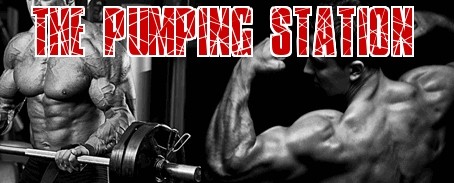Bodybuilding Training Techniques
There are basically 16 different accepted bodybuilding training techniques, all allowing the bodybuilder performing these techniques to go beyond conventional failure to help work the muscle just a little harder than the last time that body-part was trained.
It is important to note that increasing the intensity of a workout is not necessary for a beginner. A beginner will reach failure and be able to increase the weight used the next time he/she trains that body-part. Anyone training for more than a year will probably need to use one of the 16 training techniques listed below to continue gaining muscle.
Because there are 16 different training techniques we cannot explain in detail how each one is done as this article would be the length of a book. Although more than one technique could easily be used in one workout it is not recommended when starting to see how the technique works for you.
It is also recommended that you use these techniques together with a training partner or spotter as it will be more effective when learning how to use the technique correctly. A very brief single sentence description is included with each technique, to get more info on exactly how the technique is done you should ask a gym instructor or get more information online.
Forced Reps (just a little help from the spotter to get past a sticking point).
Partials (Moving the weight only through a part of the full range repeatedly).
Pre-Exhaust (Doing an isolation movement before a compound movement).
Cheating (When failure is reached using swing or momentum to complete the rep).
Drop Sets (Doing a set to failure and then reaching failure again by doing the same movement without resting using a lighter weight).
Rest-Pause (Training to the point of failure, resting for a few breaths then completing another few reps).
Super-setting (Same body-part, Isolation/Compound, Antagonistic, Upper Body/Lower Body and In-Set super-setting are different types of superset techniques).
Giant Sets (Doing several different movements concentrating on one body-part without taking any rest).
Jump Sets (Returning to complete the routine after failure. For example doing 5 sets of bench-press with 5 sets of chins and then changing the movement after 3 sets to return to complete the last 2 sets when 3 sets have been done).
2-Up 1-Down Negatives (usually only done with machines using both arms or legs on the concentric part of the movement and then using one arm or leg on the eccentric part of the movement).
Burns (usually only done in a fully stretched or fully contracted positions, these movements are small, fast movements done when the set is complete to finish off with maximal muscle fiber recruitment.
Jettison (Similar to drop sets or strip sets this method requires elastic cables that will help to drop the weights on the outside of the collar off the barbell as failure is reached).
Strip Sets (Done with barbells and two spotters to help pull off the preset amount of weight and keep stripping to thoroughly burn out the targeted muscle, similar to drop sets but with no rest.
Rep Targeting (Set a target to reach a specific number of reps and get there no matter how many times you have to rest of how many sets it takes to get there).
Negatives (Using a spotter to help on the negative portion of a movement or eccentric/lowering phase).
Heavy Supports (Holding the weight lifted in a lockout position for as long as possible).
Click Here to Sign Up for Your Free Bodybuilding Magazine Subscription
